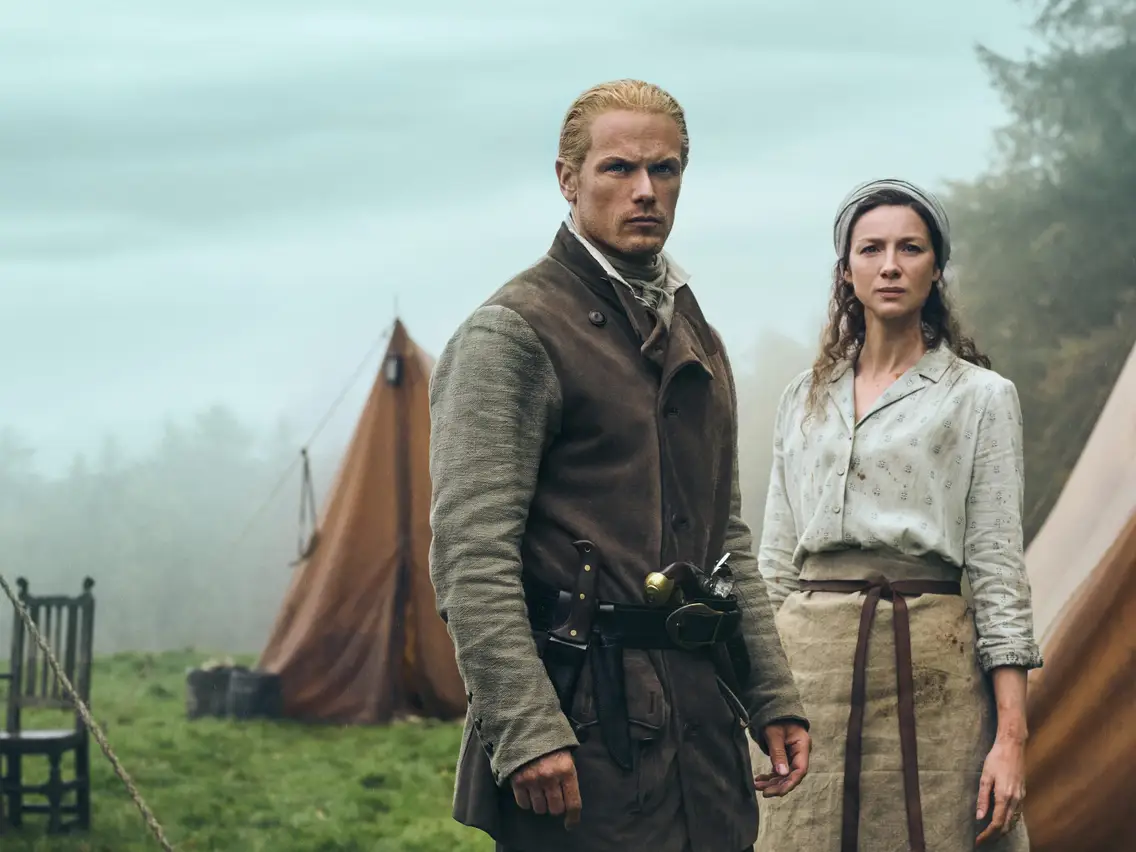“Outlander,” based on Diana Gabaldon’s best-selling book series, has captivated a global audience with its unique blend of historical fiction, romance, adventure, and science fiction. The series follows the journey of Claire Randall, a World War II combat nurse who is mysteriously transported back in time to 18th century Scotland, where she meets the gallant Jamie Fraser and becomes embroiled in the Jacobite risings. The lush landscapes, intricate plotting, and passionate relationships have not only drawn viewers into a deeply immersive world but have also sparked discussions about its classification in the streaming era, particularly regarding its association with Netflix.
The Origins And Development of Outlander
“Outlander” premiered in 2014 on Starz, an American premium cable and satellite television network. Developed by Ronald D. Moore, known for his work on “Star Trek” and the reimagined “Battlestar Galactica,” the show quickly established itself with a strong narrative and high production values. From the very beginning, “Outlander” was noted for its authentic representation of historical events, coupled with a strong, character-driven story.
The decision to adapt Gabaldon’s series was not taken lightly, with Moore and his team committing to extensive research and meticulous detail in bringing the 18th-century world to life. Filmed in Scotland, the show takes advantage of the region’s stunning natural beauty, historic castles, and period-accurate sets to create an authentic backdrop for the time-travel drama.
Broadcasting Dynamics: From Starz to Global Screens
Initially, “Outlander” was produced and broadcast by Starz, which was instrumental in the show’s development and initial distribution. Starz provided the series with a platform that allowed for creative freedom, particularly in handling the more mature content of the books, which includes graphic scenes of romance and violence. The network’s support was pivotal in maintaining the integrity and depth of Gabaldon’s novels.
As “Outlander” gained popularity, its international distribution expanded. While it remained a Starz original in the United States, the show was picked up by various networks globally. In the UK, it was broadcast on Amazon Prime Video, and in Canada, it appeared on W Network before transitioning to Netflix.
The Netflix Connection
In terms of its classification as a Netflix original, there is some confusion. Netflix often labels shows as “originals” if they are exclusively available on Netflix in a particular geographical region. This can vary significantly from country to country. For instance, in regions where Netflix holds the exclusive rights to broadcast “Outlander,” it may be promoted as a Netflix Original. However, this designation does not mean that Netflix produced the series from the outset.
In the United States, Netflix began streaming “Outlander” several years after its original premiere on Starz. The availability of “Outlander” on Netflix has undoubtedly expanded its audience, introducing the series to viewers who may not subscribe to Starz. The inclusion of “Outlander” in Netflix’s catalog has also coincided with increased interest and viewership, which speaks to the platform’s powerful role in content distribution and consumption in the streaming age.
Impact of Streaming on Outlander’s Popularity
The advent of streaming has significantly impacted how shows like “Outlander” are consumed. Series that may initially air on traditional cable networks often find a second wave of viewership on streaming platforms, which can prolong interest in and discussion about the series. For “Outlander,” its arrival on Netflix not only boosted its visibility but also helped solidify its status as a global phenomenon.
Furthermore, the binge-watching model enabled by Netflix and other streaming services complements “Outlander’s” narrative style. The complex storylines and cliffhangers at the end of episodes make it ideal for binge-watching, allowing viewers to immerse themselves fully in the world Gabaldon created.
Future Directions And Continued Success
As “Outlander” continues to produce new seasons, the partnership with Netflix is likely to play an essential role in its distribution strategy. The ease of access to past seasons helps maintain interest in new episodes and attracts new viewers who can catch up on the entire series at their own pace.
Looking forward, “Outlander” shows no signs of slowing down. The loyalty of its fanbase, combined with critical acclaim, ensures its place in the competitive landscape of television dramas. As it progresses, the series will likely continue to adapt key elements from Gabaldon’s novels, exploring new settings, characters, and plots.
Conclusion: Understanding Outlander’s Label as A Netflix Original
In conclusion, while “Outlander” is not a Netflix original in the production sense, its presence on the platform has played a crucial role in its success and international reach. The series exemplifies how modern distribution strategies can enhance a show’s visibility and accessibility, allowing it to reach and resonate with a wider audience.
As streaming continues to dominate the television landscape, the relationships between networks, production companies, and streaming platforms like Netflix will remain key to understanding the dynamics of contemporary TV viewing. “Outlander” may belong to Starz by origin, but its spirit and impact are shared across various platforms, underlining the complex, intertwined world of modern television broadcasting.
Related topics:


























